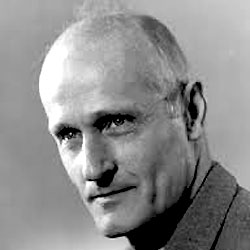Computer history - 1994
Major computer events in 1994
Håkon Wium Lie developed a concept for CSS (cascading style sheets) in 1994.

Rasmus Lerdorf introduced PHP (PHP: Hypertext Preprocessor) in 1994.
The Digital Signature Standard algorithm was implemented by the NIST (National Institute of Standards and Technology).
1994 computer and technology top terms
The following are some top computer and technology-related terms in alphabetical order that were introduced or popularized in 1994.
- CD-ROM (compact disc read-only memory)
- Dial-up
- Multimedia
New computer products and services introduced in 1994
FSSTND (filesystem standard) was released on February 14, 1994.
The last update to MS-DOS, version 6.22, was released in April 1994.
Adobe Photoshop 3.0 was released in September 1994.
Microsoft Windows NT 3.5 was released on September 21, 1994.
Intel announced IA-64 in October 1994.
Mosaic Netscape 0.9, the first Netscape browser, was officially released on October 13, 1994. This browser also introduced the Internet to cookies.
Perl 5.000 was released on October 17, 1994.
NetBSD 1.0 was released on October 26, 1994.
Sony released the original PlayStation on December 3, 1994.
Netscape version 1 was released on December 15, 1994.
The web browser Hotjava began development in 1994.
Several IBM personal systems products were brought to market in 1994, including the IBM Aptiva Personal Computer.
Sony introduced the Magic Link Personal Intelligent Communicator in 1994.
IBM released the IPDS (IBM personal dictation system), the first wave of speech recognition products for the personal computer.
IBM added germanium to silicon chips, forming the basis of low-cost, high-speed transistors in a new generation of wireless consumer products such as cell phones and pagers. In 1998, IBM became the first company to introduce silicon germanium chip-making technology into mainstream manufacturing.
Intel introduced the Intel 486DX4 processor in 1994.
Microsoft released Windows 3.11 in 1994.
Microsoft released its beta for Windows 95, code-named Chicago.
GECAD started its development of RAV (Reliable Antivirus).
Total Entertainment Network launched in 1994. The service would later be renamed Pogo.
Denso Wave invented the QR Code in 1994.
The NewsPad project was started in 1994 by the European Union, to develop a device to deliver news electronically to users. Acorn Computers developed a touch screen tablet device named the NewsPad, for the project. The NewsPad was released in Spain in 1996 as a pilot program, but ended the program in 1997.
Sega released the Sega Saturn in Japan on November 22, 1994. It was later released for North America and Europe in 1995.
IBM PCD introduced the IBM ThinkPad 775CD, the first notebook with an integrated CD-ROM.
VLB (VESA Local Bus) 2.0 was released in 1994.
The fact-checking website Snopes, was released as an urban folklore website.
Computer and technology-related events in 1994
Novell transferred its database software product to Btrieve on January 26, 1994.
Realtek announced it was going public in April 1994.
Sunbelt Software changed its name to VIPRE.
SUSE Linux was released in March 1994.
Intel released the second generation of Intel Pentium processors on March 7, 1994.
Kevin Mitnick was featured on a front-page story of the New York Times on July 4, 1994.
ANSI (American National Standards Institute) approved the ATA (Advanced Technology Attachment) standard on May 12, 1994.
The Binary Cafe opened in June 1994 and became the first cybercafe in Canada.
Tim Berners-Lee founded the W3C organization on October 1, 1994.
Hotwired sold the first banner ad to AT&T on October 27, 1994, and began running the first Internet banner ad campaign.
Professor Thomas Nicely sent an e-mail on October 30, 1994, describing the Intel FPU (floating-point unit) bug. A mathematical flaw in the Intel Pentium involving the Pentium not correctly performing floating-point calculations was discovered. Later, this led to Intel recalling millions of processors.
WXYC (89.3 FM (frequency modulation) Chapel Hill, NC USA) became the first traditional radio station to announce broadcasting on the Internet on November 7, 1994.
The W3C organization held its first meeting on December 14, 1994.
On December 24, 1994, Unisys and CompuServe announced they expected licensing fees for software that created and displayed GIF (graphics interchange format) images. This announcement caused hysteria among developers and website owners using GIF images because of potential future GIF taxes that lead to developing PNG (portable network graphics) format.
The URN (uniform resource name) was defined in December 1994.
The last edition of the Compute! computer magazine was released in 1994.
The fractal landscape generator Bryce was introduced in 1994.
The Mach Project ended in 1994.
Wired News, sister company to Wired magazine, launched in 1994.
John McAfee resigned from the company in 1994.
Microsoft introduced SMS (systems management server), now known as SCCM (system center configuration manager), in 1994.
Mindscape was sold to Pearson PLC in 1994.
Jaap Haartsen laid the foundations for the technology that would later be known as Bluetooth in 1994
Iomega released its Zip disk drive and diskettes in 1994.
The e-mail hoax "Good Times virus" was first sent via e-mail. The hoax claimed an e-mail containing "Good Times" in the subject line was spreading on the Internet and would erase everything on the hard drive if opened. This e-mail continues to be sent even today.
Intel became the largest volume motherboard manufacturer in the world in 1994.
The first microbrowser, PocketWeb, was created in 1994.
EPIC (Electronic Privacy Information Center) was established in 1994.
In 1994, Orchid Technology was acquired by Micronics Computers.
Norway's telecom company, Telenor, started a research project that became Opera Software.
The PowerPC was first implemented in the Apple Power Mac in 1994.
The Quick Response Barcode, commonly known as the QR code, was invented by Denso Wave in 1994.
The Simon Personal Communicator was released by IBM in 1994 and became the first smartphone.
Vice President Al Gore made a speech where he coined the term "Information Superhighway" in 1994.
CDDI (Copper Distributed Data Interface) was adopted into the X3-T9.5 standard in 1994.
Dell introduced the first Dell Dimension computer in 1994.
The book "Design Patterns: Elements of Reusable Object-Oriented Software" was published in 1994.
In 1994, IBM introduced the IBM ThinkPad 775CD, the first notebook with an integrated CD-ROM (compact disc read-only memory).
Jack Lo introduced the vertical mouse in 1994.
VESA Local Bus 2.0 was released in 1994.
Erik Selberg and Professor Oren Etzioni developed MetaCrawler at the University of Washington.
Online transaction systems, including online banking and online shopping, started emerging on the Internet in 1994.
ZIPI (Zeta Instruments Processor Interface) was introduced in 1994.
Computer companies and organizations founded in 1994
The company, now known as Yahoo!, was founded by Jerry Yang and David Filo in January 1994.
Netscape (Mosaic Communications Corporation) was founded by Marc Andreessen and James H. Clark on April 4, 1994.
Geek Squad was founded on June 16, 1994.
Jeff Bezos founded Cadabra, Inc. on July 5, 1994, a few months later, it was renamed to Amazon.
3DFX was founded in 1994.
3D Labs was founded in 1994.
Apogee created the company name 3D Realms in 1994, a division solely dedicated to creating 3D games, such as Duke Nukem 3D.
Forcepoint was founded in 1994.
T-Mobile was founded in 1994.
Acorp was founded in 1994.
Caldera was founded in 1994.
CNET was founded in 1994.
Corsair was founded in 1994.
Earthlink was founded in 1994 by Sky Dayton.
EarthWeb was founded in 1994.
Eiger Labs was founded in 1994.
IBM and Kodak formed Technology Service Solutions in 1994.
Initio was established in 1994.
ISC (Internet Systems Consortium) was founded in 1994.
JTS was founded in 1994.
MetroPCS was founded in 1994.
Mindsping was founded in 1994.
Mushkin was founded in 1994.
PC CHIPS was incorporated in 1994.
PCTEL was founded in 1994.
Pervasive Software was founded in 1994.
Phoebe was founded in 1994.

Red Hat Linux company was founded, and the Red Hat Linux distro was released in 1994.
Simmtronics was founded in 1994 by Brijesh Kumar.
Sunbelt Software was founded in 1994.
Traxdata was founded in 1994.
ZiiLabs was founded in 1994.
Computer company events in 1994
Commodore computers declared bankruptcy on April 29, 1994, and sold off its assets like Amiga.
Mosaic branched off the company Netscape on November 14, 1994.
The company Silicon & Synapse was renamed to Blizzard Entertainment.
The organization ECMA (European Computer Manufacturers Association) changed its name to Ecma in 1994 and is no longer considered an acronym.
Internet domains that came online in 1994
Amazon.com domain was registered on November 1, 1994.
Live.com domain was registered on December 28, 1994.
Sun.com went online in 1994.
Computer pioneer deaths in 1994

Stephen Kleene passed away on January 25, 1994 (Age: 85).
Gary Kildall passed away on July 11, 1994 (Age: 52).
Stephen Dunwell passed away on March 21, 1994 (Age: 80).
Bashir Rameyev passed away on May 16, 1994 (Age: 76).
Jay Miner passed away on June 20, 1994 (Age: 62).
William Higinbotham passed away on November 10, 1994 (Age: 84).
Robert Miner passed away on November 11, 1994 (Age: 52).
